Sheep in wolf’s clothing

The ground-hugging splitter, the socking-great rear wing, and the familiar white, blue and red livery – when we first approached this BMW M1 at Dylan Miles Ltd, we thought we knew exactly what we were ogling: a full-fat Procar. Wrong. It’s actually a road-going model with all the Procar mod cons; a car that has all the aesthetic brutality of the racer but with the comforting sensibilities of a BMW 6 Series. “Its second owner was a BMW dealer and he had the factory bodywork fitted and a set of custom BBS wheels produced to mimic the look of the Procar’s,” Miles explains. But don’t for one minute think this is a classic case of all mouth and no trousers. “It has a sports exhaust and velocity stacks, so it’s properly quick and sounds like a banshee when you push on.” The only issue you’d inevitably face (although some might not see it that way) is the perplexed look on the faces of passers-by as they wonder what on earth you’re doing driving a racing car to the shops. Someone was clearly as taken with the car as we were, as it was sold on the stand on Tuesday.
Mille Miglia

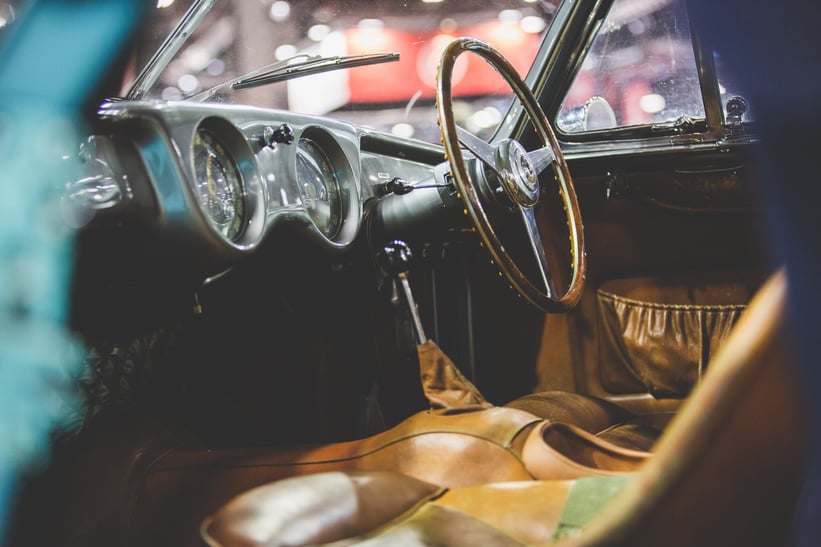
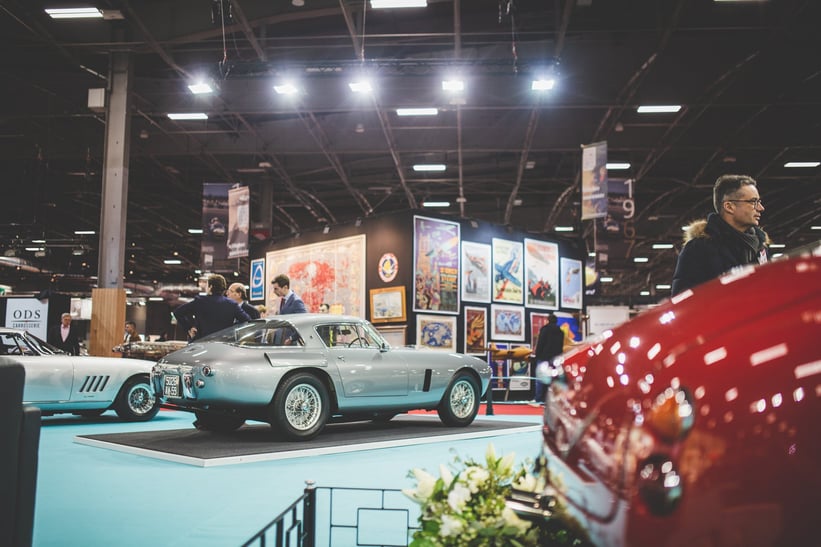
Aston DB4GT Zagato, Ferrari 275 GTS, Lancia Aurelia B24 Spider America – picking a favourite from Kidston SA’s stand was a bit like choosing which leg you prefer – not an easy decision. Of course, had our lottery numbers come in last weekend, our imaginary millions would have been happily exchanged for the 1953 Ferrari 250 MM. Not only is the ‘Mille Miglia’ rarer than its more illustrious successors, but we reckon it’s also more beautiful, especially finished in this elegant and understated shade of grigio. This car was sold new to Dottore Enrico Wax, a wealthy Italian businessman whose company imported alcohol. He was also a good friend of Enzo Ferrari, though whether or not this was because he imported Il Commendatore’s favourite brand of Scotch, Johnnie Walker, will remain a mystery.
Smoking hot
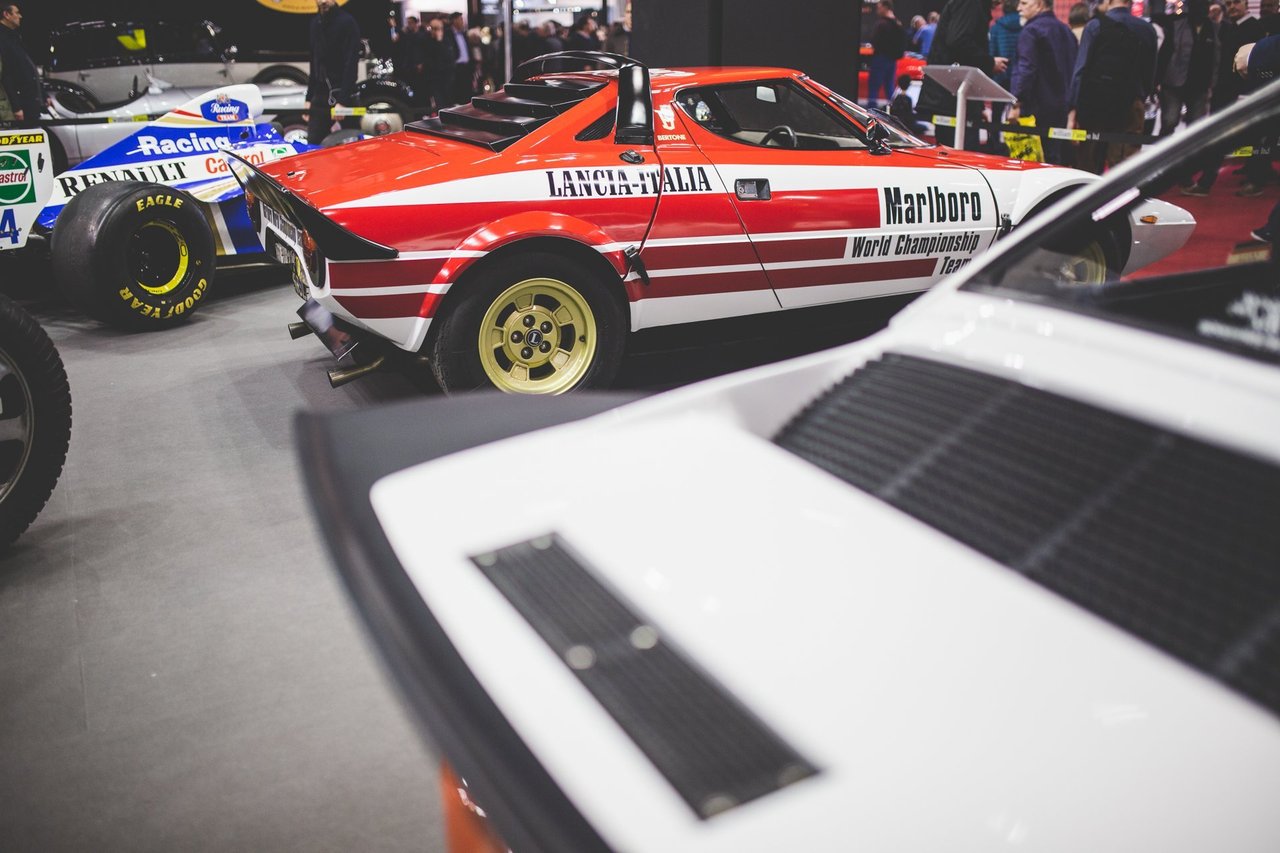
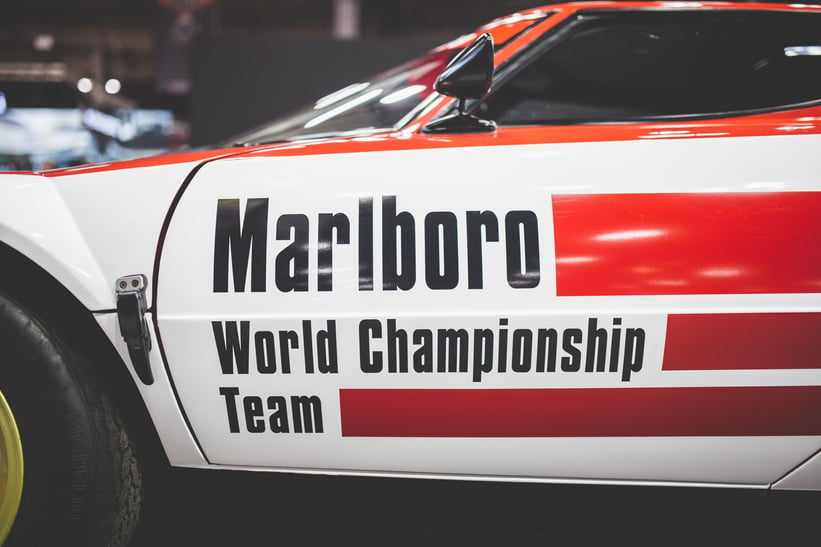
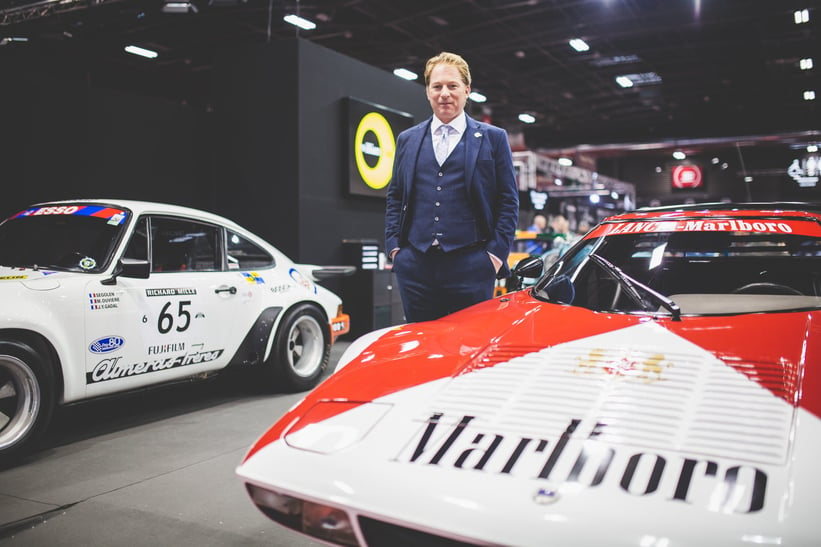
Smoking ain’t cool kids, but boy did it create some fantastic liveries back in the day. This charming Lancia Stratos, which was presented in Paris by William I’Anson, is a great case in point. Just the third production Stratos built, it was sold new to Philip Morris, promptly decked out in a striking Marlboro livery and used at various events to promote the cigarette giant’s partnership with the Works Lancia team – chassis #1003 actually served as the safety car for the Giro d’Italia at Misano in 1975. “This is sort of a tipping point between a prototype and a production car,” I’Anson informs us, “and because of this, it has a number of quirks: we believe it’s the very first Stratos to have a wing fitted to the roof and, somewhat bizarrely, it’s always had two left wing mirrors.” Italians. Taking into consideration the Stratos’s teeny wheelbase and its three World Rally Championship victories, the same certainly can’t be said of its feet.
César’d
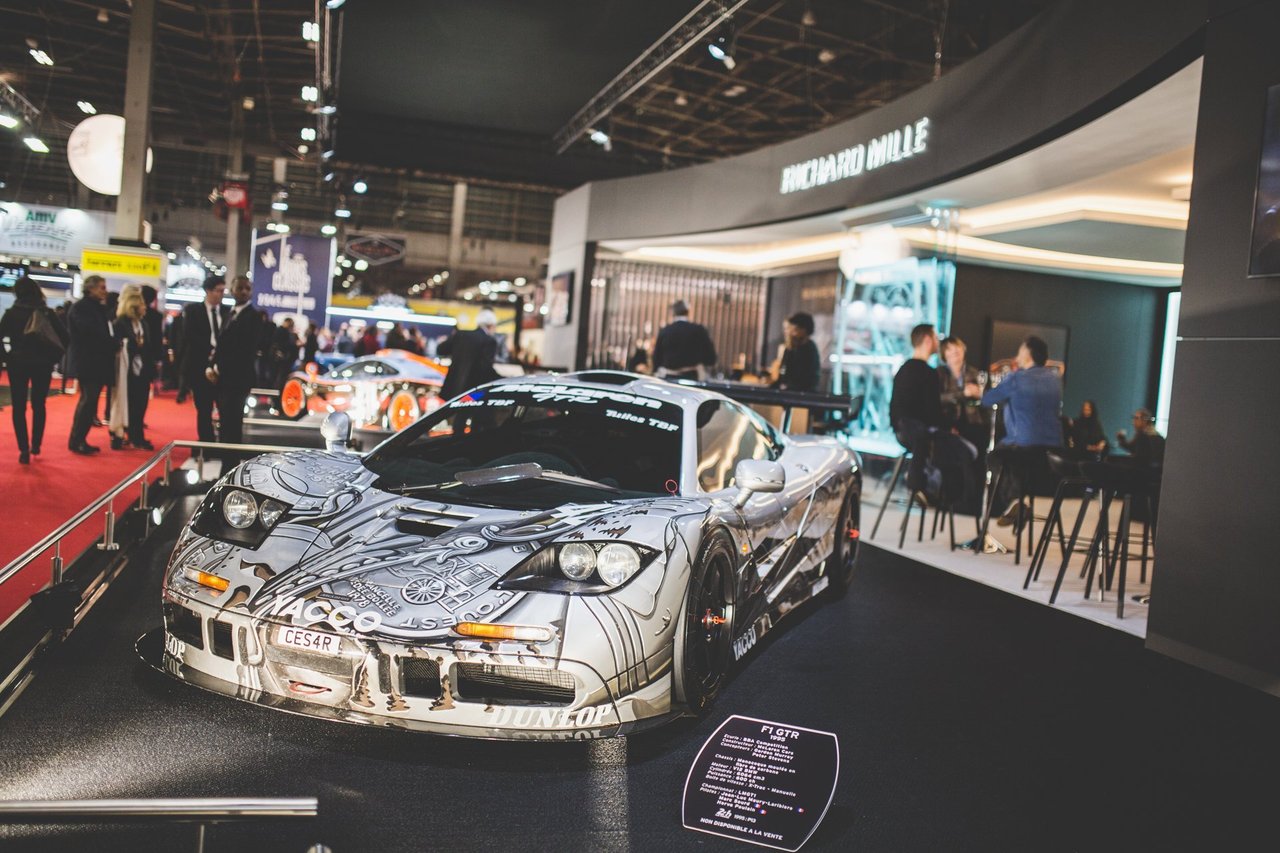
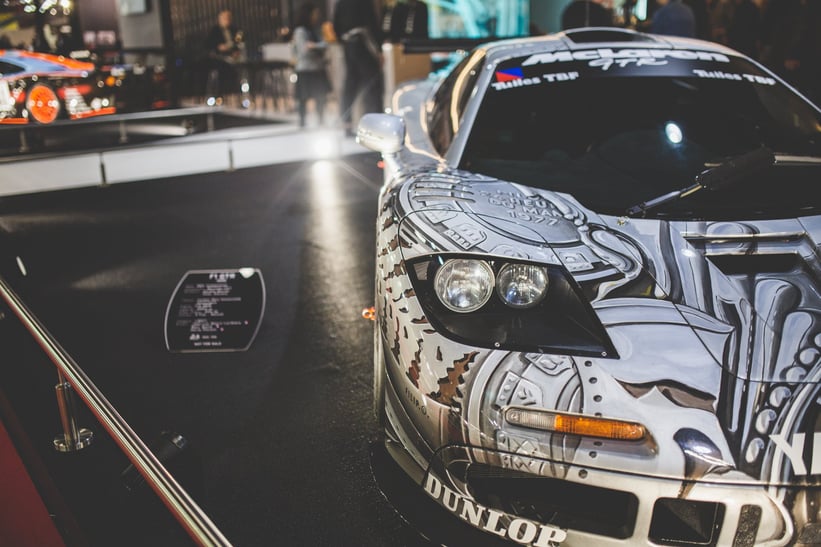
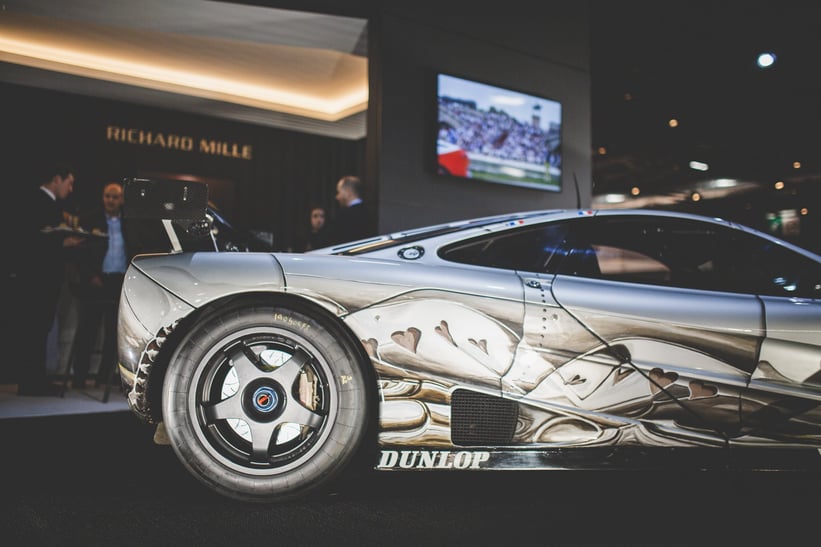
Twenty-five years ago, a machine that was conceived to be the greatest road-going supercar ever built won the greatest motor race on the planet. We are of course talking about the McLaren F1 and its sensational debut at La Sarthe in 1995, a race in which the three-seater supercar finished a scarcely believable first, third, fourth, fifth and 13th. While the Le Mans winner itself was present at Rétromobile, it was this car, chassis #05R, that stopped us dead in our tracks whenever we passed.
The car was driven at Le Mans by its owner, the French industrialist Jean-Luc Maury-Laribiére, Marc Sourd and Hervé Poulain. The latter was famously the instigator of the now-fabled BMW Art Car project in the 1970s and seeing as the F1 was powered by a BMW V12, the opportunity to use the GTR as a blank canvas was too good to pass up. The sculptor César was the artist in question and the resulting design, a Giger-esque abstract depiction of Poulain’s old trophies from Le Mans, remains on the car, untouched, to this day. At an Artcurial sale in 2010, this McLaren F1 bid to 1.8m euros and failed to meet its reserve price. We imagine whoever that was who missed out that day has regretted it ever since.
Finally living up to its name
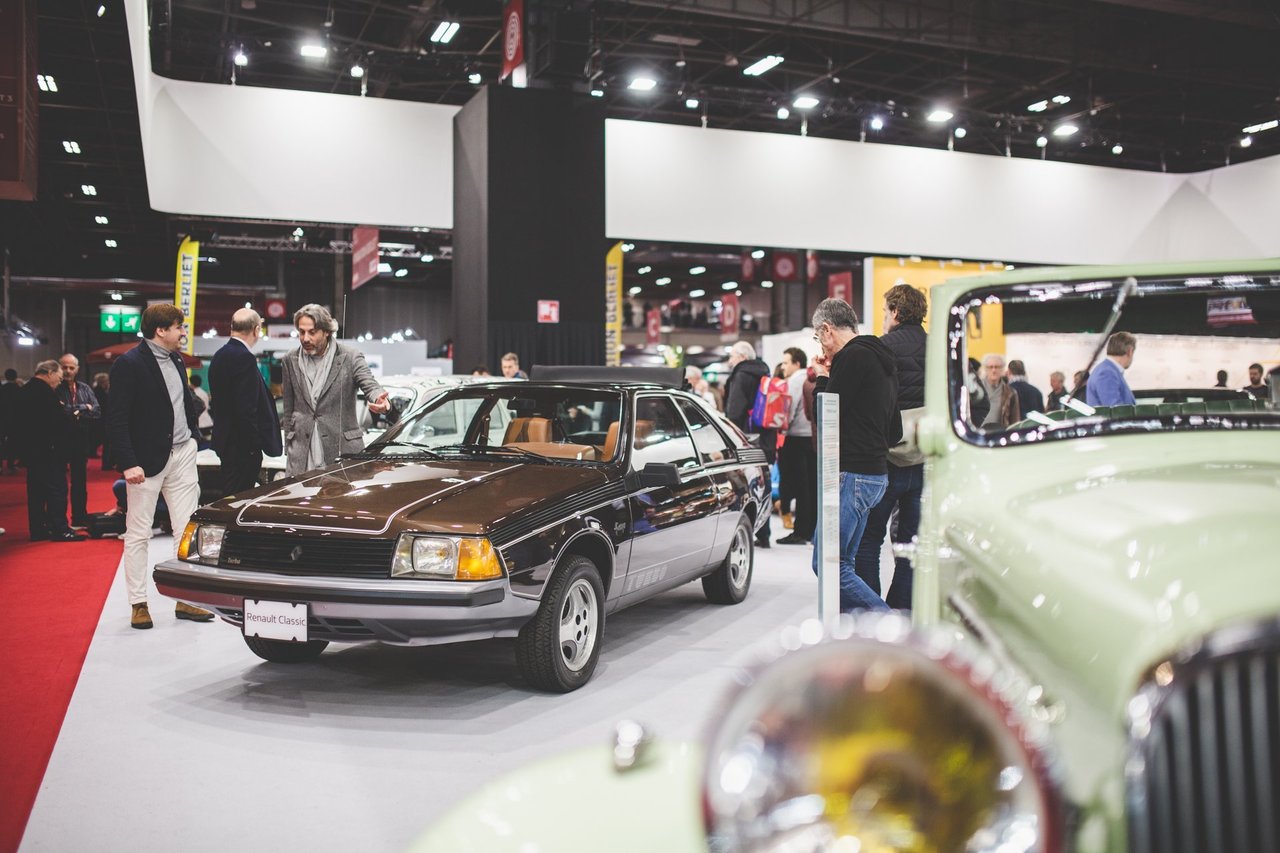
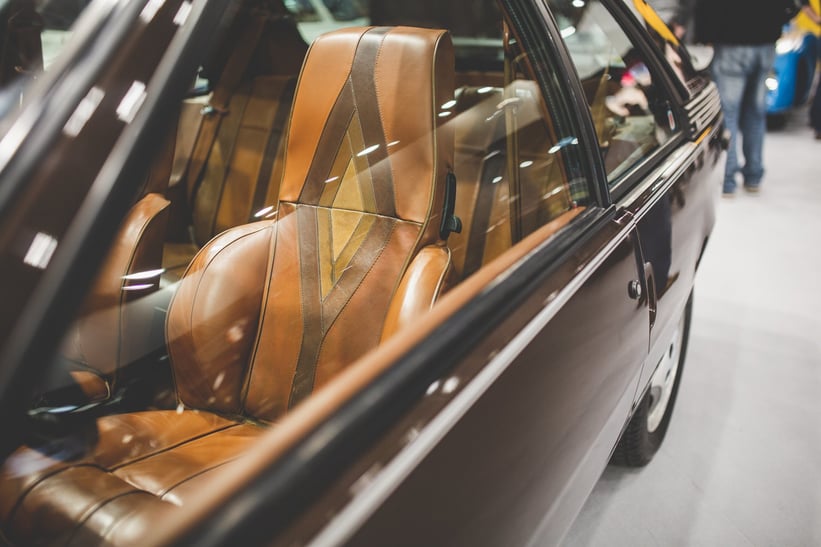
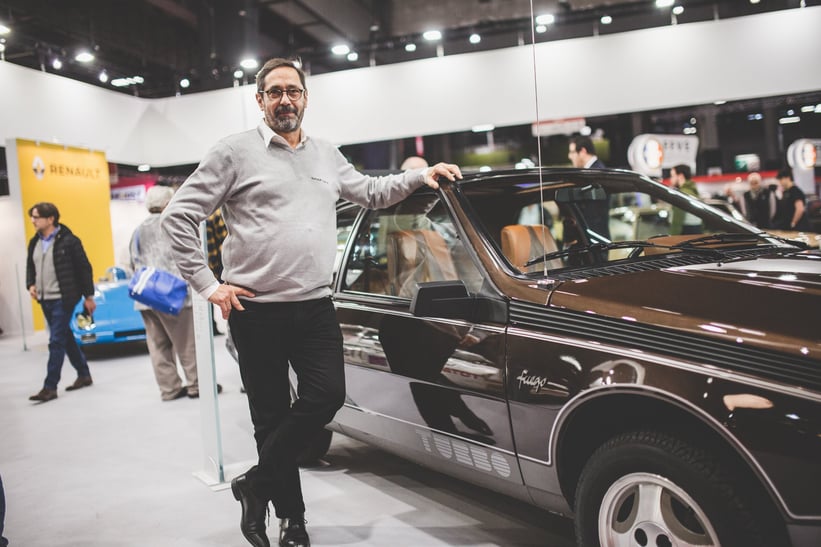
You might be wondering why in the Lord’s name a Renault Fuego graces this list? Well, firstly, out of sympathy for the handsome old thing, which turns 40 years old this year – we’ve never witnessed so many people poke fun out of a car like the Rétromobile goers did to this one and we felt obliged to stick up for the quirky coupé. Secondly, this is an American-spec Fuego Turbo, which has the most spectacular brown velour interior.
“We made a raft of changes to the car in order to sell it in America but the most offbeat in my opinion was the cabin,” comments Hugues Portron, the head of Renault Classic. “We could never have proposed those seats in France or Europe, but the Americans were absolutely crazy about nut-brown colours – this was the 1980s, after all!” Renault pitched the Fuego as a Porsche 924 for the masses, but in reality, it was half the car. The rear-wheel drive didn’t help for starters, nor did the acutely obvious lack of power and woeful reliability. “In France especially, the Fuego was laughed at a lot in the past, admittedly me included,” Portron continues, “but with the passing of time there is a certain charm to be found in the car.” We couldn’t agree more. We actually would rather like one – in chestnut brown, naturally.
A Bentley on two wheels
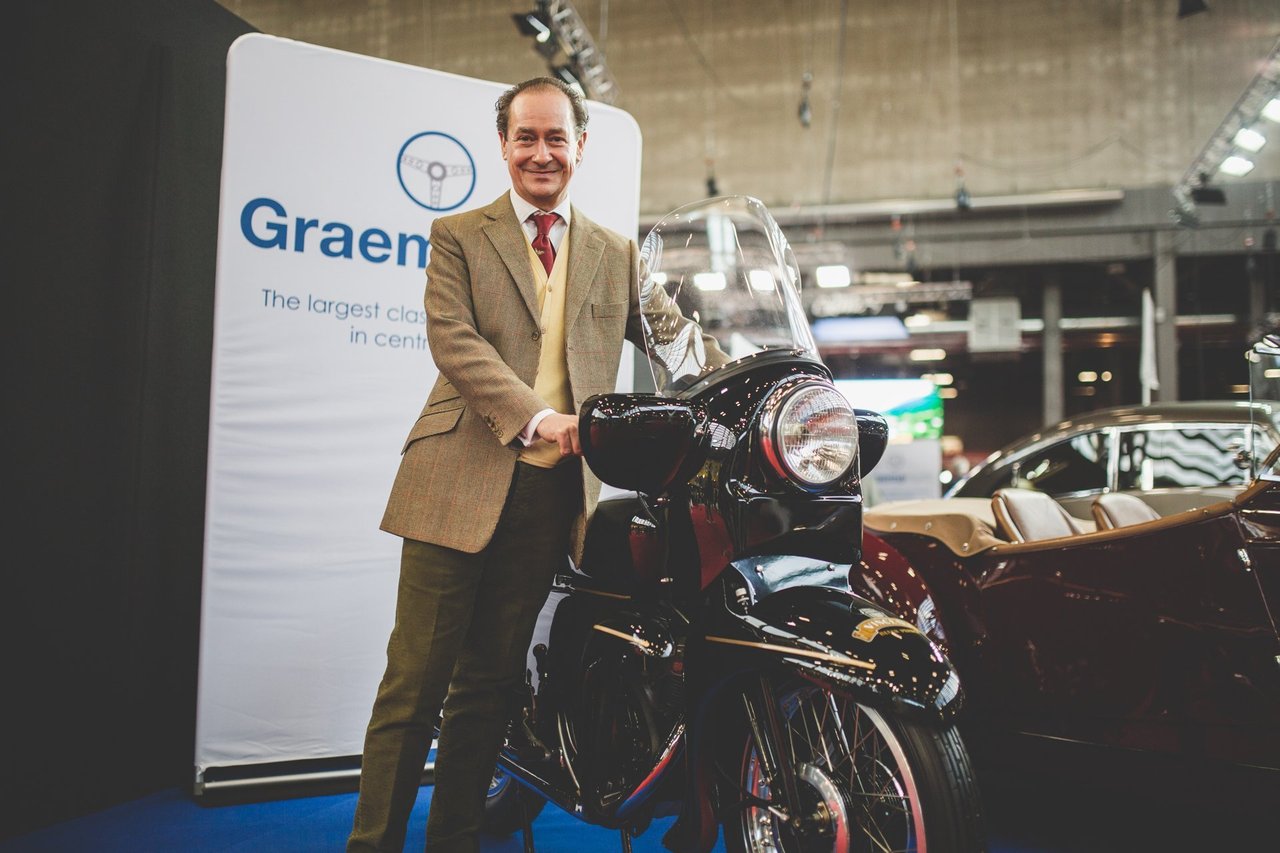
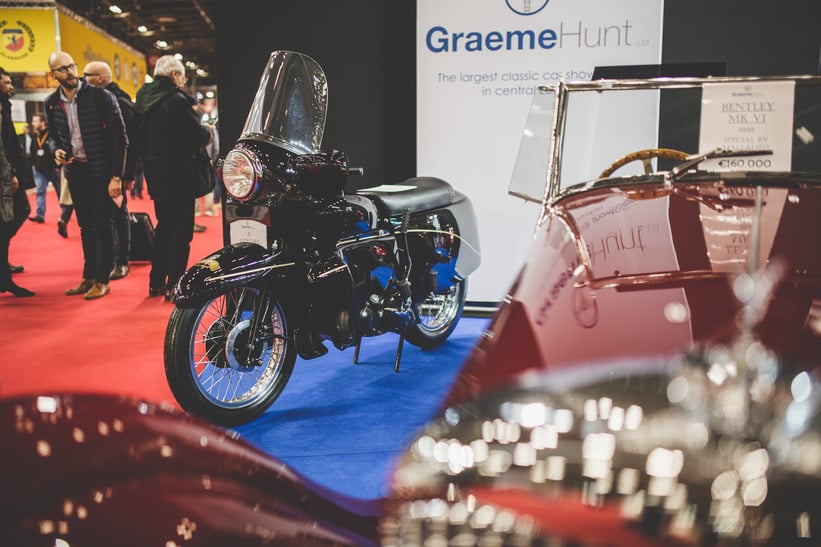
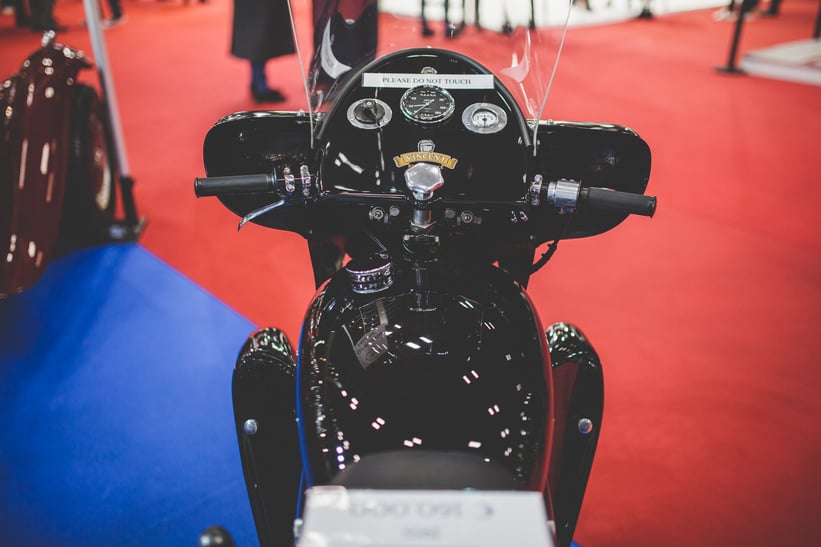
It’s remarkable to think that just five years ago, the gleaming ‘factory fresh’ Vincent Black Prince displayed by our good friend Graeme Hunt was a big box of bits. “The well-known British Touring Car engineer and leading Vincent saviour Mick Cook tackled the restoration single-handedly and I can’t explain to you how magnificent a job he has crafted,” comments Hunt. “It’s arguably the best one out there, but there aren’t many out there in the first place.” He’s right – just 132 Black Princes, conceived as ‘two-wheeled Bentleys’, ever left the Vincent factory in Stevenage. It’s a mighty object to examine in the metal, its size and heft belying its dizzying performance for what is a machine from 1956. Any daredevil Rollie Free wannabes in Paris this week know who to visit!
Pop!
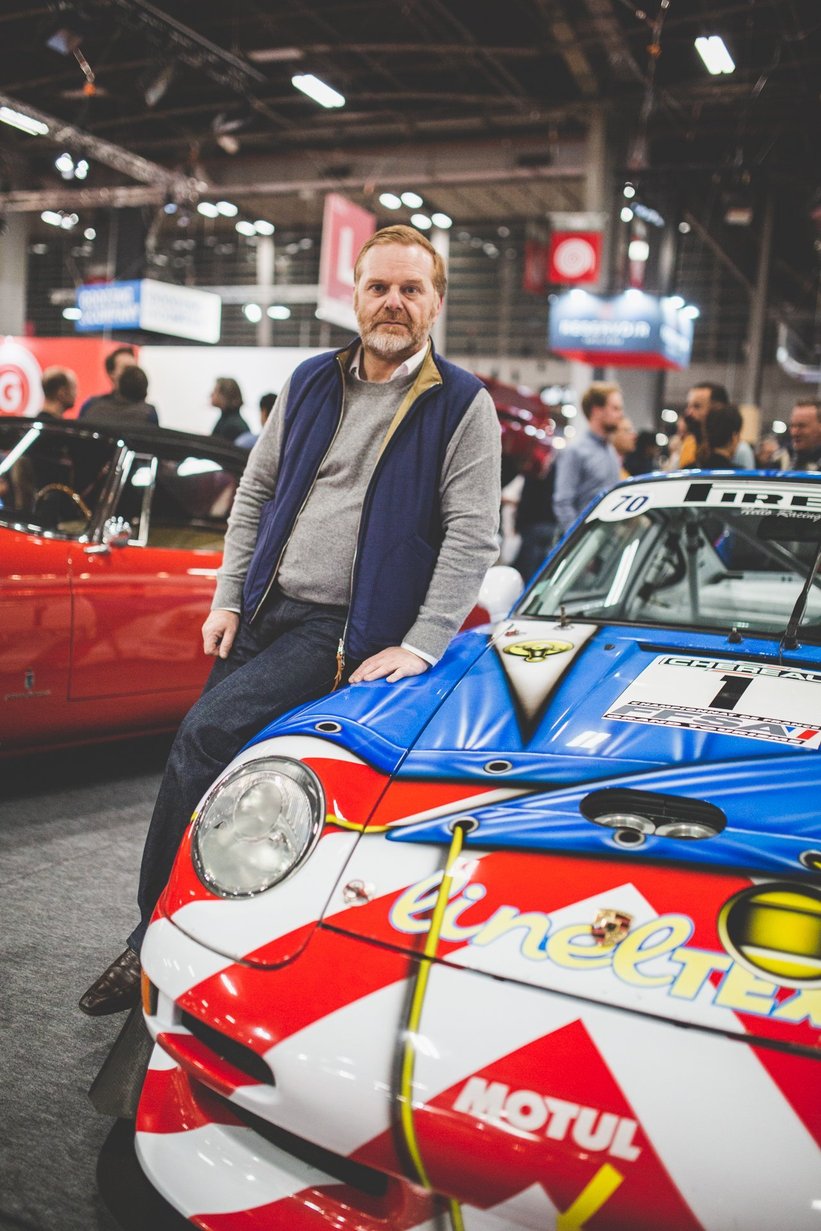
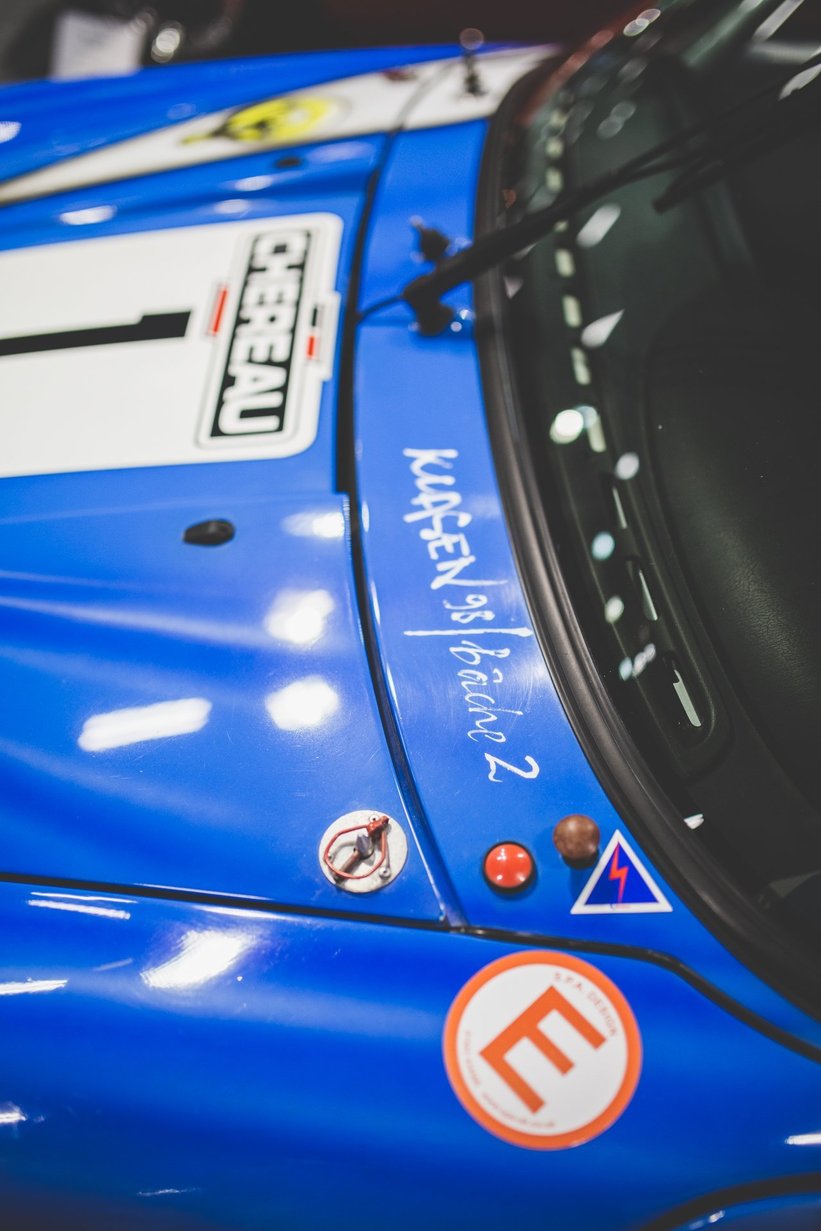
This 1998 Porsche 911 GT2 makes the cut not only for its wild livery, which was hand-painted by the German pop artist Peter Klasen to resemble a blue canopy concealing bold red stripes beneath, but also because it’s something of a national hero in France. Gael Regent of Historic Cars, who is selling the car, explains. “This is a really well-known car in France, and everybody remembers it. It was painted by Peter Klasen, entered by Sonauto and raced by the legend that is Jean-Pierre Jarier. Furthermore, it won the 1999 FIA GT Championship.” Interestingly, there were two of these Klasen-painted Porsches. The first was written off at Le Mans in 1998 before this car was quickly drafted in for duty. The owner had the foresight to keep a number of the panels from the crashed car and they’re presented with this car today. Does office wall art get any better?
Once upon a time…
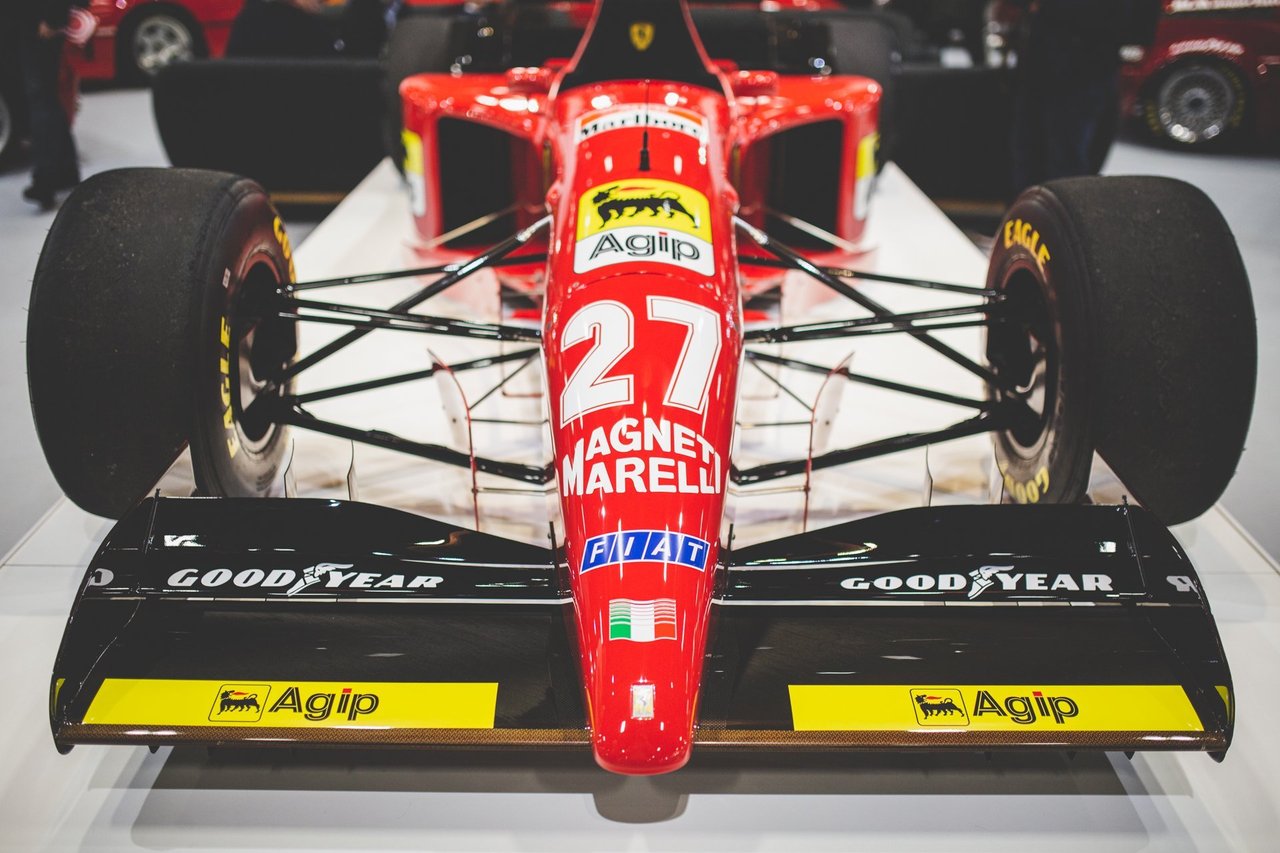
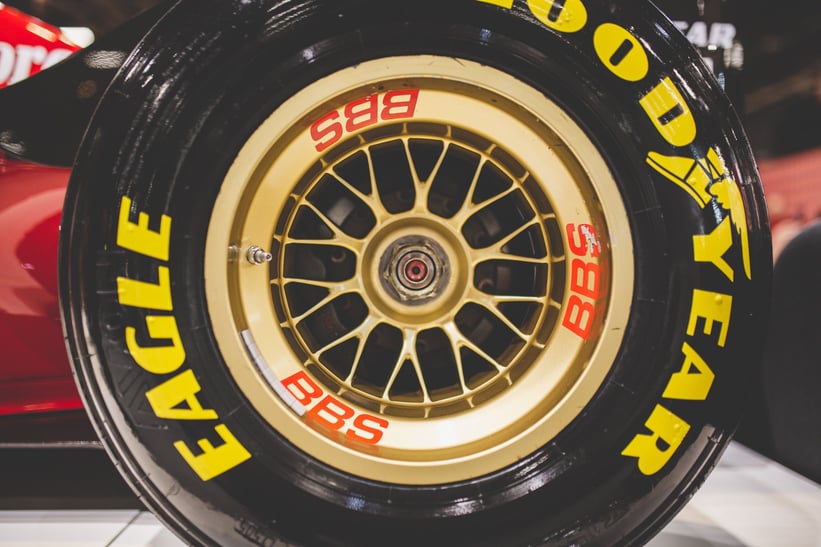

As someone who grew up watching Michael Schumacher win what felt like every Formula 1 Grand Prix in his scarlet single-seaters, I simply couldn’t leave out this car, the very first Ferrari the German great ever drove, from this list. Taking pride of place at Girardo & Co., Ferrari 412 T2 chassis #157 was tested by Schumacher at Fiorano in November of 1995 following his abrupt exit from Benetton. To give you an idea of just what this news meant to the Italians, over 2,000 people flocked to Maranello to see the 26-year-old turn a wheel in their beloved Ferrari. It may have been just seven laps, but the seat time was symbolic of the dominative success that would soon come to light: Schumacher galvanised a dream team around him and, during the course of the following 11 seasons, won 72 races and five Formula 1 Driver’s World Championships with the Scuderia Ferrari. And this car is where the fairy tale began.
Ahead of the curve
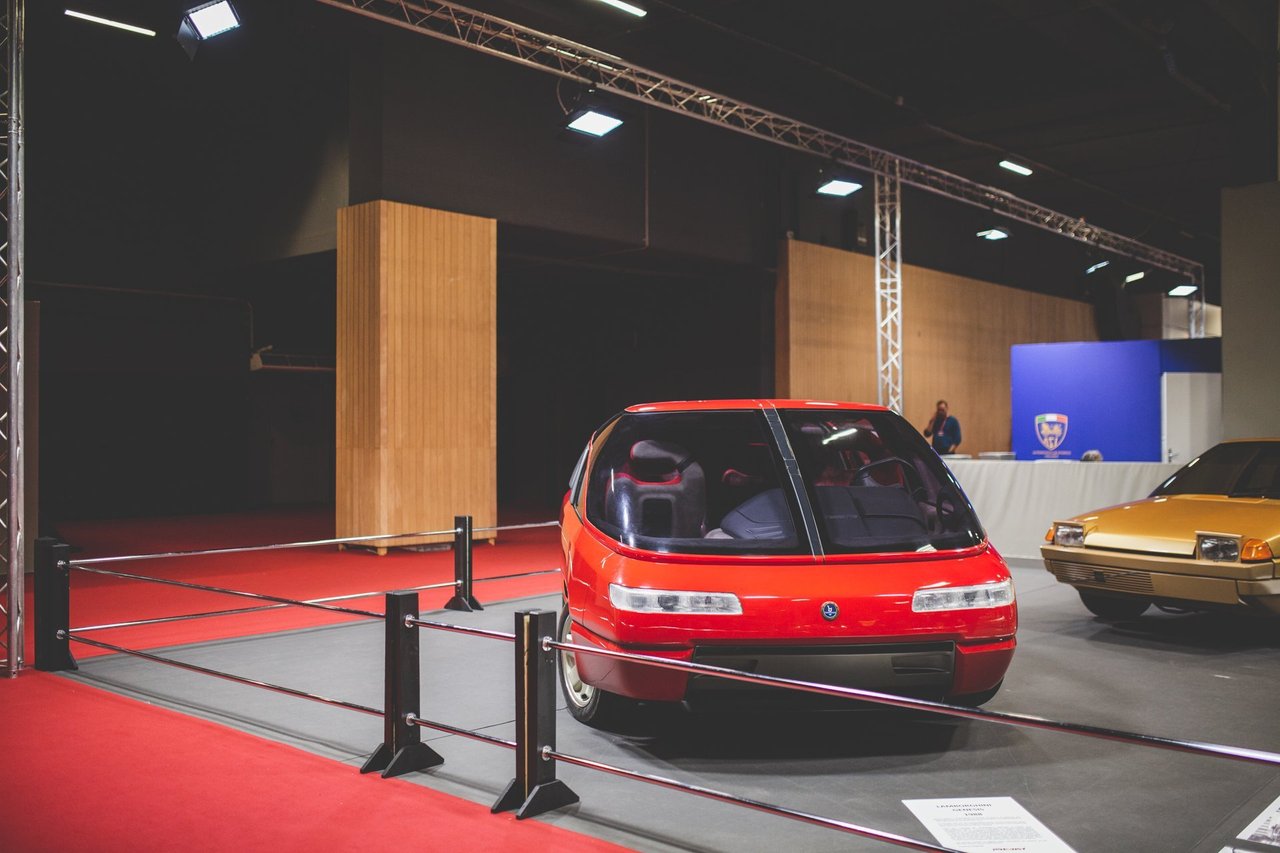
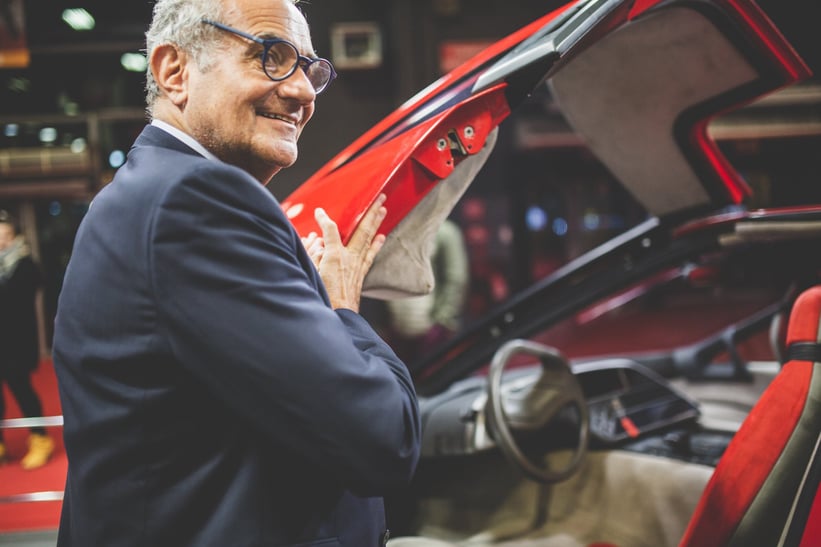
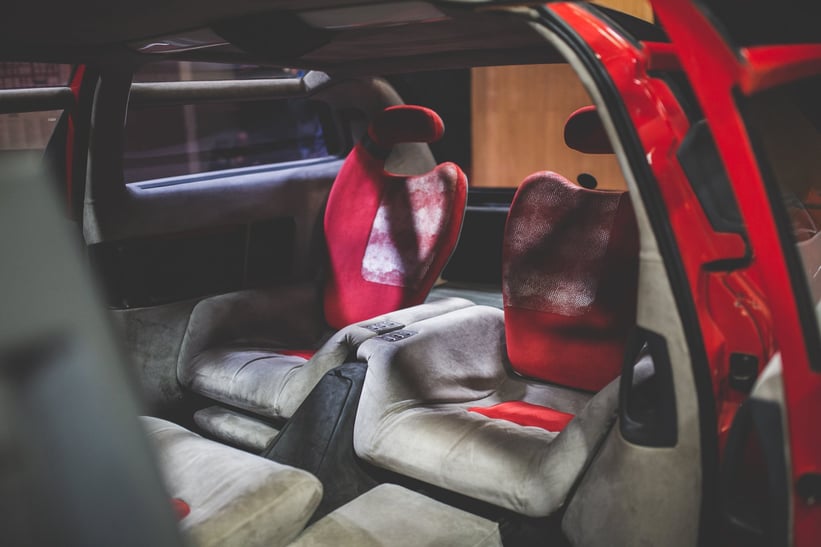
In 1988, Bertone decided that people carriers needed jazzing up. After all, which aspiring young high-school pupil wanted to show up at the front gates in a Renault Espace? After 30,000 hours of research and development, the blob-shaped Genesis was ready to be shown at the Turin salon. The chalk to the Countach’s cheese, the Genesis was truly space age, boasting a streamlined body, huge gullwing doors at the front and sliding doors at the rear, and an innovative modular interior that wouldn’t have looked out of place on the Starship Enterprise. Oh, and a 455bhp Countach V12 lurking beneath. “You need to understand Bertone’s particular approach to design to put the Genesis into context,” explains Marco Rodda from the Automotoclub Storico Italiano, who presented the car along with 10 other obscure Bertone prototypes at Rétromobile. “He had the ability to understand from a commercial point of view what the market wanted – as you can see today, high-performance luxury people carriers are all the rage. The Genesis was truly ahead of its time.”
Agnelli style
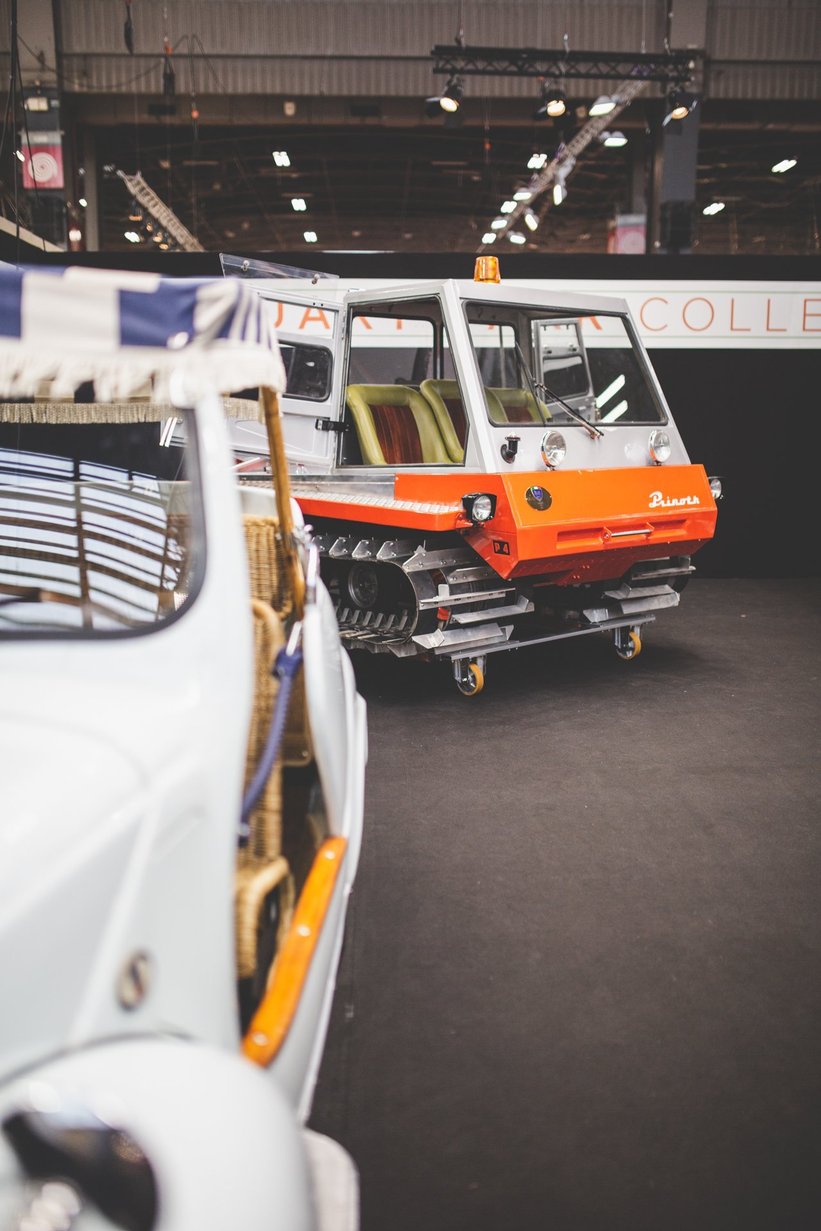
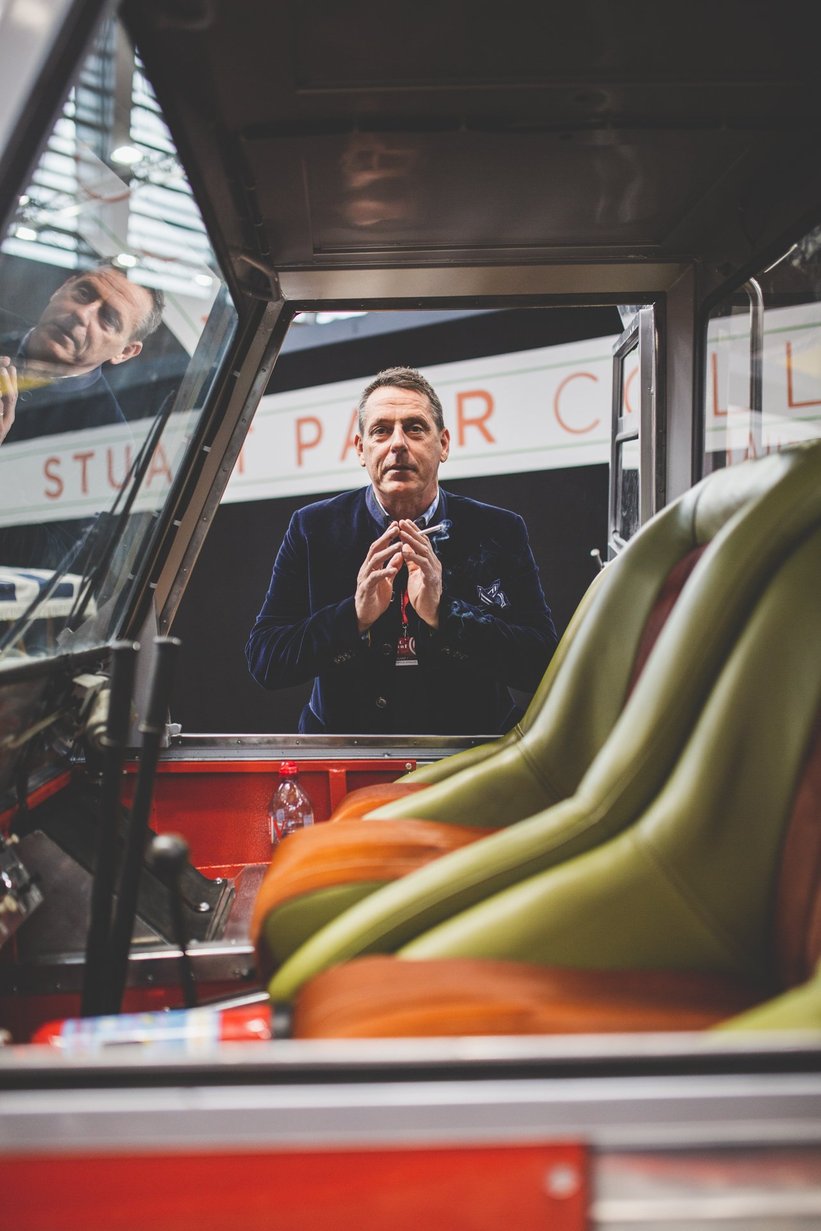
Trust the Italians to build a vehicle as utilitarian as a snow cat with the pizzazz of their sports cars. One of a number of European eccentricities displayed by the American collector and dealer Stuart Parr, this fabulous Prinoth from 1976 is just the kind of contraption we can imagine Gianni Agnelli would have used to whisk guests to the remotest slopes above St. Moritz to ski. “I found it in Ancona in the middle of nowhere and had it restored in Italy,” Parr recalls from the middle jump seat, cigarette drooped from his mouth. “It has horsehair seats and I think it’s absolutely beautiful – it’s the small details I love the most, like the way the metal trim curves around the cabin.” Parr is equally fascinated by company founder Ernesto Prinoth, a gentleman racer who had a tendency to crash his Ferrari GTOs quite spectacularly. “He won tonnes of hill climbs but there are also loads of photos of his cars smashed to oblivion and looking like giant accordions.”
Perfect patina


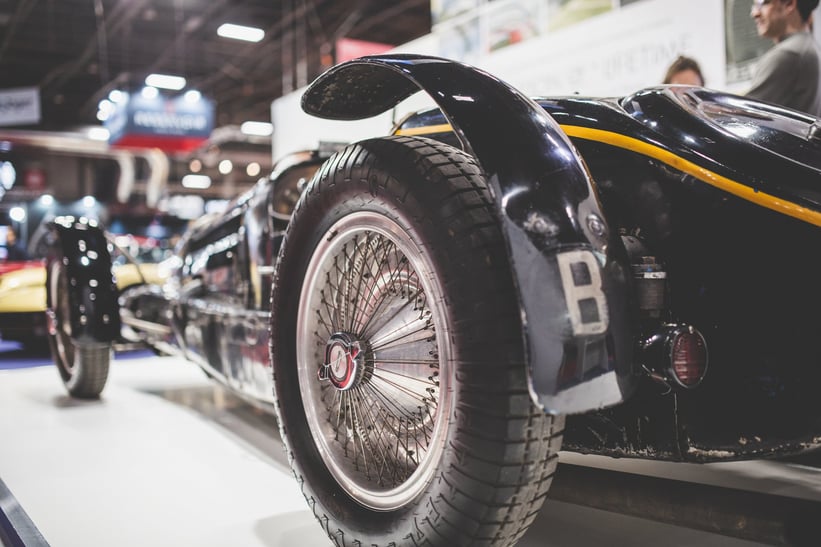
Okay, there are 11 cars on this list. But you’ll forgive us when you learn what our final pick, arguably the finest of the bunch, is: a unique Bugatti Type 59 Sports. The jaw-droppingly original Bugatti headlines Gooding & Company’s ‘Passion of a Lifetime’ auction at Somerset House in London on 1 April and we had the distinct pleasure of talking to founder David Gooding at Rétromobile about the wonderful car. “It started life as a Grand Prix car and was actually one of the more successful Type 59s, so much so that it was retained by the factory,” explains Gooding. “No longer able to compete with the Italians and the Germans in Grand Prix racing, Bugatti converted the car for sports-car racing. The transformation included the addition of wheel arches, lights, those tiny doors and a dashboard, but it’s also got a unique firing order, facilitating a smoother, more tractable driving experience, and a one-off dry-sump gearbox.
“In 1938, it was painted black with a yellow pinstripe and sold to King Leopold III of Belgium, who treasured the car for a number of years. And today, it’s largely in the same condition as when he bought it, thanks to the foresight of its subsequent owners.” You simply cannot fake patina like that found on this Bugatti. It’s nothing short of mesmerising, causing you to stop and stare, slack jawed. “We always said that we’d only hold a sale outside the US if we were adding something special to the market,” Gooding concludes. It’s fair to say old cars don’t come any more special than this magical Type 59.
Photos: Mathieu Bonnevie for Classic Driver © 2020





















































